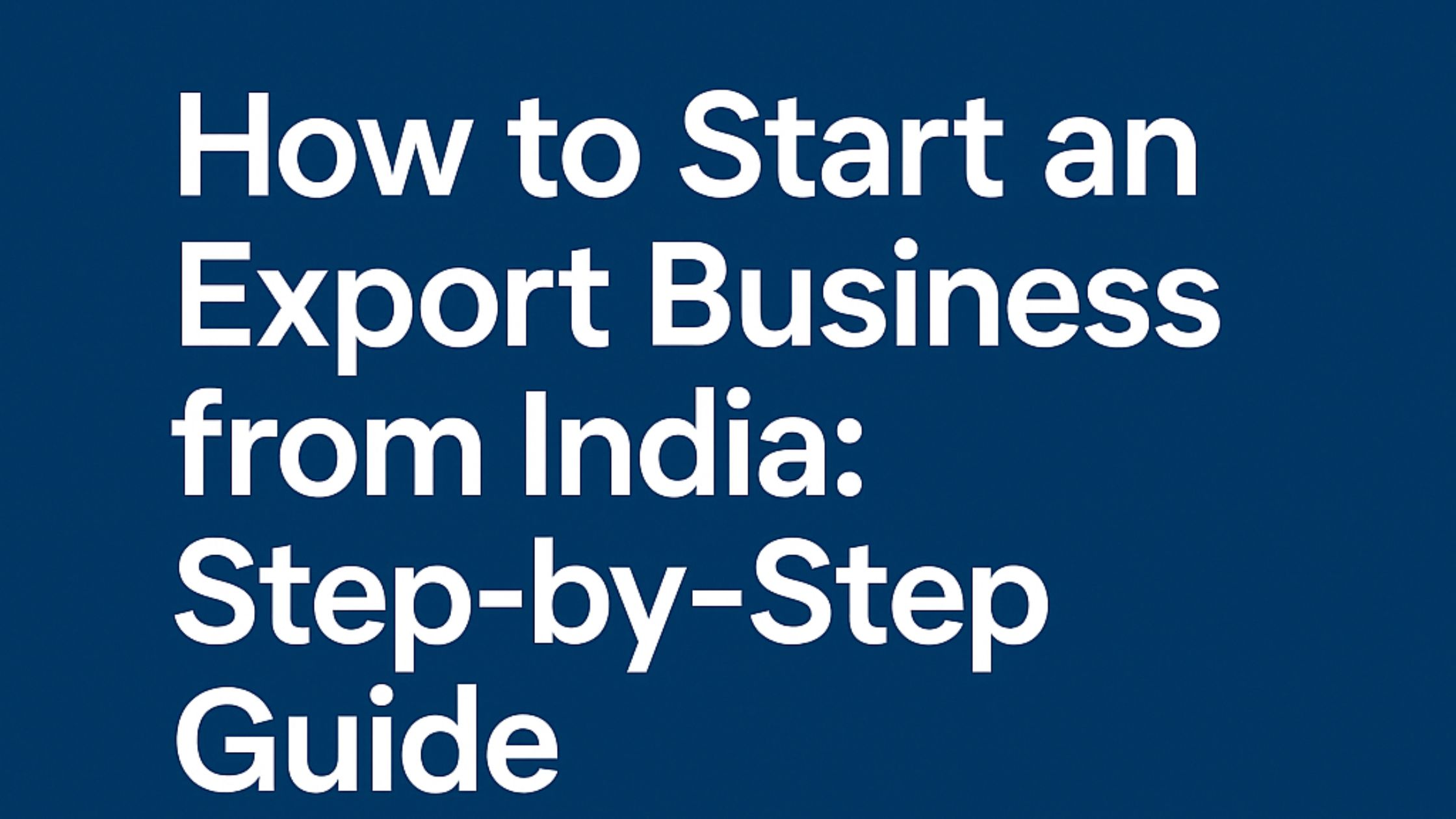Introduction
Starting an export business from India is an exciting and potentially profitable venture — but it can feel overwhelming when you’re new.
From registration to documentation to finding buyers, there’s a lot to navigate.
This guide breaks it all down into simple, actionable steps — so you can start your journey into global trade with confidence.
📌 Step 1: Choose Your Business Structure
Before you begin, decide how you’ll operate legally:
- Sole Proprietorship
- Partnership Firm
- Limited Liability Partnership (LLP)
- Private Limited Company
Register your business with the appropriate government body (MCA, local authorities) and obtain a PAN card in your business name.
📌 Step 2: Open a Current Account
Open a current bank account in the name of your business. This is necessary for all export transactions and receiving foreign currency payments.
📌 Step 3: Apply for IEC (Import Export Code)
This is your unique export business identification number issued by DGFT (Directorate General of Foreign Trade).
You can apply online via: https://dgft.gov.in
- Simple online form
- PAN card, bank details, address proof
- Fee: ₹500
No IEC = No exports.
📌 Step 4: Register for GST
Even if you’re only exporting, GST registration is mandatory. You’ll need it to generate invoices and claim certain export-related benefits.
Apply via: https://gst.gov.in
📌 Step 5: Choose Your Export Product
Pick a product that:
- Has global demand
- Is legally allowed for export from India
- Offers reasonable profit margins
Tips to research:
- DGFT Trade Data
- Export Promotion Council sites
- Market trends on platforms like Tridge, ITC Trade Map
📌 Step 6: Understand Your Product’s HS Code
Every product has a Harmonized System (HS) code, used internationally for classification.
You’ll need this code for:
- Customs filing
- Export documentation
- Calculating duties
Find it on https://icegate.gov.in
📌 Step 7: Understand Export Documentation
Here are the key documents you’ll need:
- Proforma Invoice
- Commercial Invoice
- Packing List
- Shipping Bill
- Bill of Lading / Airway Bill
- Certificate of Origin
- Insurance Certificate
- FIRC (payment proof)
Tip: Work with a Customs House Agent (CHA) to avoid errors.
📌 Step 8: Decide INCOTERMS and Payment Method
INCOTERMS define who handles shipping, insurance, customs, etc.
Common beginner-friendly terms:
- FOB (Free On Board)
- CIF (Cost, Insurance, Freight)
For payment, use secure methods like:
- Letter of Credit (LC)
- Advance Payment
- Bank Guarantee
📌 Step 9: Find International Buyers
Ways to find genuine buyers:
- B2B platforms: IndiaMART, Alibaba, ExportersIndia
- Trade fairs (physical & virtual)
- Export Promotion Councils
- LinkedIn outreach
Need help? Check out our post on “How to Find Export Buyers from India.”
📌 Step 10: Arrange Shipping & Dispatch
Once you have an order:
- Finalize logistics (sea/air freight)
- Create and verify all documentation
- File shipping bill on ICEGATE
- Work with freight forwarder or CHA
After dispatch, track your shipment and send documents to the buyer.
📌 Step 11: Receive Payment & Claim Benefits
Your payment will be received via bank (AD bank under FEMA regulations).
Once received:
- File FIRC
- Claim export incentives (like RoDTEP)
Keep all records for at least 5 years.
✅ Final Tip:
🎁 Download our Free Export Startup Checklist
Get a printable step-by-step checklist with everything you need to launch your export business in India.
👉 Download Now
🔗 Explore more tools & downloads → [Visit Export Resource Hub]



